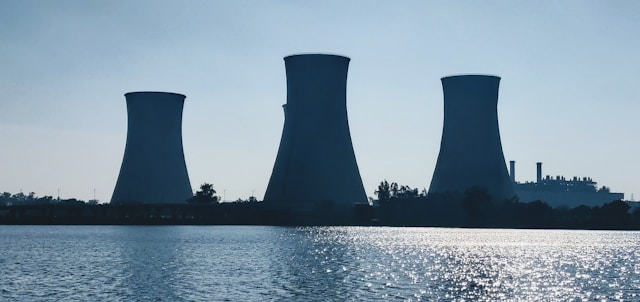By Max Frankel / Think Progress
The 20th century was characterized by the frenzied acquisition, storage, and use of oil. But many experts believe that the 21st century will be remembered as the century of water.
One of the most alarming emerging issues is the symbiotic — and often conflicting — relationship between electricity generation and water.
A new report called “Burning Our Rivers: The Water Footprint of Electricity” details this relationship, illustrating the massive amounts of water resources used for electricity generation — particularly from fossil fuels and nuclear.
An average U.S. household’s monthly energy use (weighted by cooling technology and fuel mix) requires 39,829 gallons of water, or five times more than the direct residential water use of that same household…. Electricity—as we generate it today—depends heavily on access to free water. The impact to our freshwater resources is an external cost of electrical production. What the market considers ‘least cost’ electricity is often the most water intensive.
According to the U.S. Geological Survey, 53 percent of all the fresh surface water withdrawn for human consumption in 2005 was used for electricity generation.
While consumption in the U.S. is falling, coal is still the most dominant source of power in the country. It is also the single largest consumer of water resources:
A MWh of electricity generated by coal withdraws approximately 16,052 gallons and consumes approximately 692 gallons of water…. On average (a weighted average taking into account the current mix of cooling technologies being used at coal plants in the U.S.), coal-fired electricity requires the withdrawal of approximately 13,515 gallons and the consumption of 482 gallons of water per MWh for cooling purposes.
The water not used directly for power generation is used in mining coal and other treatment before burning, creating millions of gallons of “sludge” that can potentially pollute freshwater supplies.
Nuclear power is not much better:
Similar to coal-fired power plants, nuclear power plants traditionally operate with single-cycle cooling technologies, which are systematically more water intensive than all other thermodynamic cooling technologies. Additionally, because nuclear fission is less thermodynamically efficient than the combustion of coal, the water required to generate nuclear power is slightly greater than that of coal-fired power.
According to the report, Nuclear power plants “(withdraw) approximately 14,881 gallons and (consume) 572 gallons of water per MWh.” Large amounts of water are also used in the uranium mining process and for storage of fuel rods. In Georgia, for example, two large nuclear power plants use more water than all the water used by people living in Atlanta, Augusta and Savannah combined.
Read more from Think Progress: http://thinkprogress.org/climate/2012/07/02/508879/burning-rivers-how-coal-and-nuclear-are-sucking-up-our-fresh-water/
Photo by Ajay Pal Singh Atwal on Unsplash

